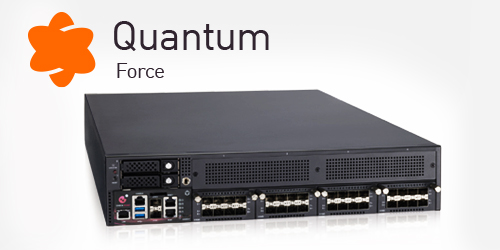Check Point has revealed that the number of ransomware attacks using Locky and Cryptowall both increased by 10% in November as the company released its monthly Global Threat Index, a ranking of the most prevalent malware families attacking organizations’ network.
Check Point found both the number of active malware families and number of attacks remained close to an all-time high as the number of attacks on business networks continued to be relentless. Continuing a trend first detected in October, Locky ransomware continued to increase in prevalence with a further 10% increase in the number of attacks using this family – a pattern that was mirrored by the fifth most common malware, Cryptowall.
The pattern highlights the growing threat posed to corporate networks by ransomware and suggests that many organizations are simply paying ransoms to secure the return of their files, making it an attractive – and lucrative – attack vector for cyber-criminals. For the eighth consecutive month, HummingBad remains the most common malware used to attack mobile devices.
Once again Conficker retained its position as the world’s most prevalent malware, responsible for 15% of recognized attacks. Second-placed Locky, which only started its distribution in February of this year, was responsible for 6% of all attacks and third-placed Sality was responsible for 5% of known attacks. Overall the top ten malware families were responsible for 45% of all known attacks.
- ↔ Conficker – Worm that allows remote operations and malware download. Infected machines are controlled by a botnet, which contacts its Command & Control server to receive instructions.
- ↔ Locky – Ransomware, which started its distribution in February 2016, and spreads mainly via spam emails containing a downloader disguised as a Word or Zip file attachment, which then downloads and installs the malware that encrypts the user files. Locky was the no.1 malware family in the largest amount of countries (34 countries compared to Conficker, which was the top malware in 28 countries).
- ↑ Sality – Virus that allows remote operations and downloads of additional malware to infected systems by its operator. Its main goal is to persist in a system and provide means for remote control and installing further malware.
The Ramnit banking trojan saw the largest increase in attacks globally in November, entering Check Point’s top 10 ranking for the first time as the 6th most common malware. It more than doubled its amount of infections since last October, and was mainly seen in Turkey, Brazil, India, Indonesia and the U.S. Ramnit is used to steal banking credentials, FTP passwords, session cookies and personal data.
Mobile malware families continued to pose a significant threat to businesses. The three most common mobile families were:
- ↔ HummingBad – Android malware that establishes a persistent rootkit on the device, installs fraudulent applications and enables additional malicious activity such as installing a key-logger, stealing credentials and bypassing encrypted email containers used by enterprises.
- ↔ Triada – Modular Backdoor for Android which grants super-user privileges to downloaded malware, as helps it to get embedded into system processes. Triada has also been seen spoofing URLs loaded in the browser.
- ↑ Ztorg– Trojan that uses root privileges to download and install applications on the mobile phone without the user’s knowledge.
Nathan Shuchami, Head of Threat Prevention at Check Point explained, “Ransomware attacks are still growing in volume for a simple reason – they work and generate significant revenues for the attackers. Organizations are struggling to effectively counteract the threat posed by this insidious attack form; many simply don’t have the right defenses in place, and may not have educated staff on how to recognize the signs of a potential ransomware attack in incoming emails. This, of course, only makes it even more attractive to criminals.
“Organizations must use advanced threat prevention measures on networks, endpoints and mobile devices to stop malware at the pre-infection stage, such as Check Point’s SandBlast™ Zero-Day Protection, Threat Extraction, and Mobile Threat Prevention solutions, to ensure that they are adequately secured against the latest threats,” added Shuchami.
Check Point’s threat index is based on threat intelligence drawn from its ThreatCloud AI World Cyber Threat Map, which tracks how and where cyberattacks are taking place worldwide in real time. The Threat Map is powered by Check Point’s ThreatCloud AITM intelligence, the largest collaborative network to fight cybercrime, which delivers threat data and attack trends from a global network of threat sensors. The ThreatCloud AI database holds over 250 million addresses analyzed for bot discovery, over 11 million malware signatures and over 5.5 million infected websites, and identifies millions of malware types daily.
Follow Check Point Research via:
Blog: https://research.checkpoint.com/
Twitter: https://twitter.com/_cpresearch_
About Check Point Research
Check Point Research provides leading cyber threat intelligence to Check Point Software customers and the greater intelligence community. The research team collects and analyzes global cyber-attack data stored on ThreatCloud AI to keep hackers at bay, while ensuring all Check Point products are updated with the latest protections. The research team consists of over 100 analysts and researchers cooperating with other security vendors, law enforcement and various CERTs.







